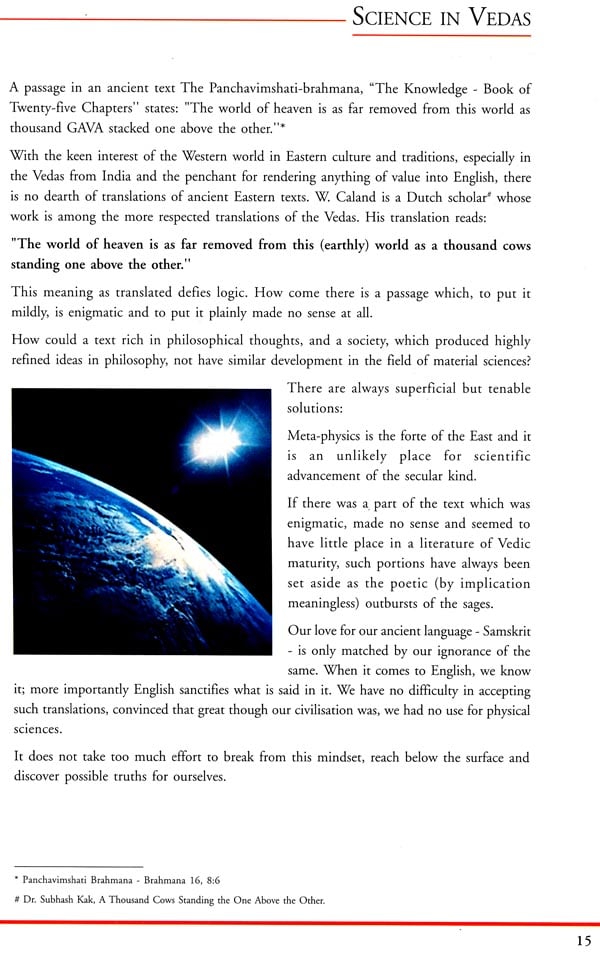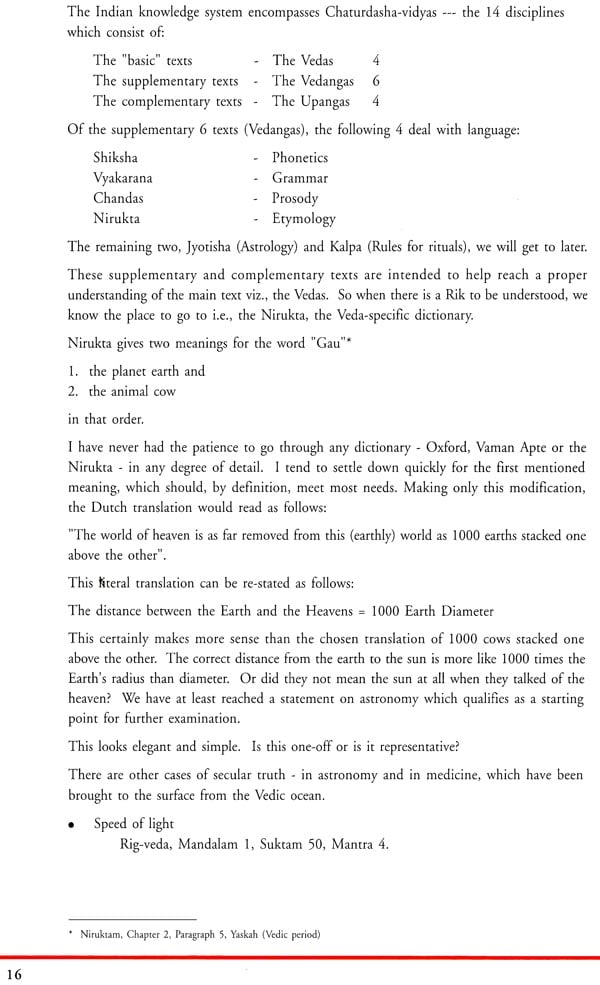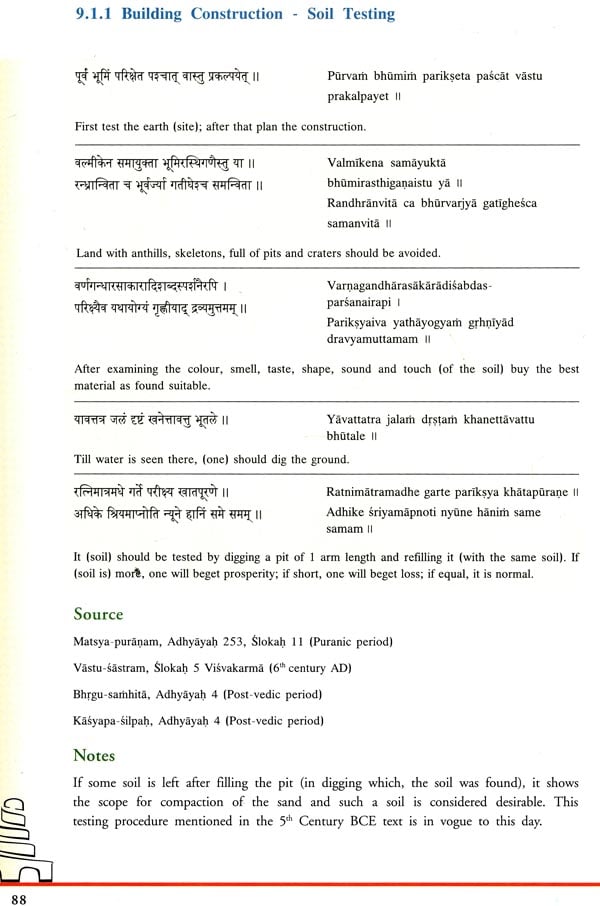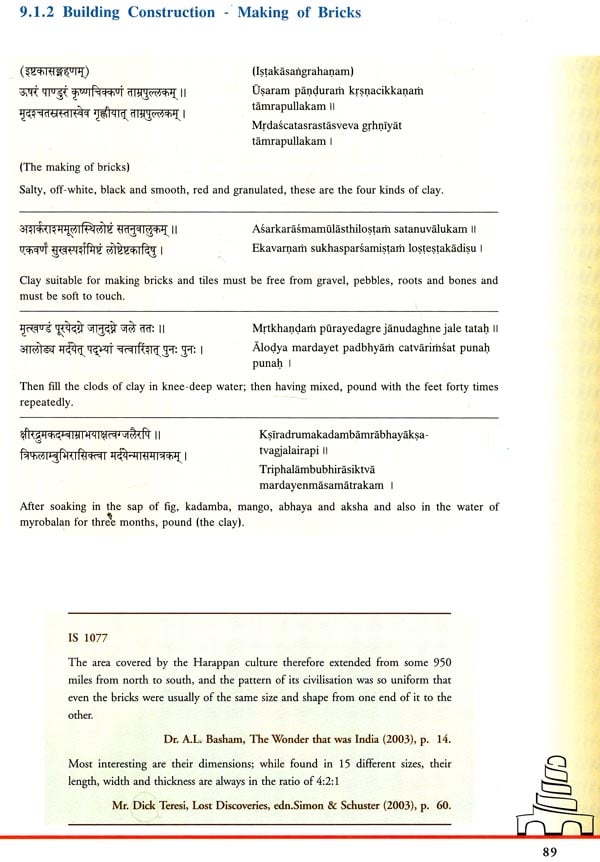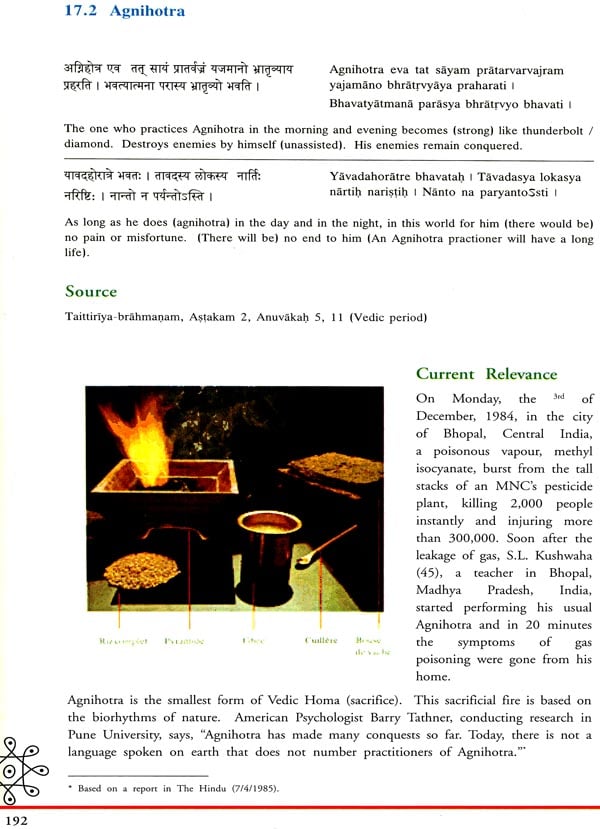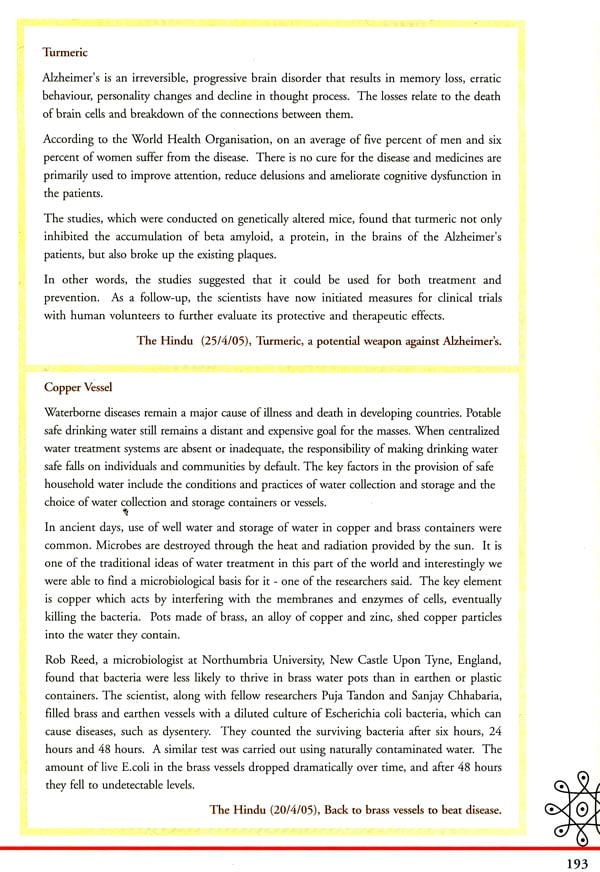
Pride of India (A Glimpse into India's Scientific Heritage)
Book Specification
| Item Code: | NAF441 |
| Publisher: | Samskrita Bharati, Delhi |
| Language: | English |
| Edition: | 2006 |
| ISBN: | 8187276274 |
| Pages: | 208 (Throughout Color Illustrations) |
| Cover: | Hardcover |
| Other Details | 11.5 Inch x 8.5 Inch |
| Weight | 1 kg |
Book Description
Ancient Indian has always been acclaimed for literature, philosophy, and allied branches of knowledge. But the significant strides they had made in the fields of science and technology have remained relatively unknown.
Today, the scientific literature in Samskrit available to us is vast and varied, covering subjects as diverse as alchemy and astronomy mathematics and metallurgy, gemology and zoology, and many more. Even so several questions have been raise4d as to their antiquity and authenticity. This perhaps is due to a lack of proper understanding of India’s cultural ethos by historians and often a narrow interpretation of ancient Indian manuscripts.
Pride of India brings these issues to light, while attempting to answer them in a manner that will stand the test of dispassionate, scientific scrutiny. It is hoped that this new perspective will give a new thrust and dimension to scholars and scientists in their journey into India’s past and help derive full benefits of her scientific heritage.
Why pride of India?
The twentieth century has seen unprecedented development in knowledge and technology. Car to spacecraft all have been invented and commercialized in the lifetime of a person. At the end of this epochal growth, humanity is at crossroads.
• The green revolution high yielding varieties of seeds, chemical fertilizers and chemical pesticides was the blessing which saved India from ruinous famines and equally ruinous food import bills in the 1960s. Today, the best brains in agriculture and chemical technology, including some who were involved in the green revolution, are searching desperately for ways and means of restoring the soil fertility which has been completely eroded by the revolution. We are looking for alternatives, which have not emerged yet.
• Allopathy has taken great strides in the last 3 decades. Unknowingly in this avalanche of development, basic tenets of Allopathy have been lost. The doctor ties the bandage but it is he who heals the fracture is the exiom that drove the course of treatment that doctor chose some year ago. This axiom is based on the premise that the body had the potential to heal itself. Today the adverse side effects of allopathic treatment are so acute and widespread that there is a longing for alternate medicines in every part of the world.
The world is compelled to question the appropriateness of the methodologies and technologies that have come into being in the last 100 years. The society needs an alternate worldview in every area of human life, from the model of the family to system of education to science and technology.
We need and alternate mindset to find innovative solutions. The world is looking to the East, inclusive of India, for such solution. But does India have the knowledge base to fill this role?
From time immemorial, this land has been known as Bharat a Samskrit word that denotes a men or a nation immersed in knowledge what is today called a knowledge society.
In the course of the colonial rule we have learnt to revere the west and worse discount ourselves. A person who has spent 12 years of his life in learing the Vedas is seen as uneducated not only by the society, but also by the person himself.
The only way to reach anything of value to the Indian hearts and minds has been by getting the idea through the west.
Reiki, Thai massage, child delivery at home, music therapy the list ideas that have been exported an reimported is long and growing.
Today, the scientific literature in Samskrit available to us is vast and varied, covering subjects as diverse as alchemy and astronomy, and metallurgy, gemology and zoology, and many more.
There is knowledge no merely methodologies but more fundamentally, perceptions and approaches, which have stood the test of time, which could provide the answers. This knowledge, as you will see from this book is to be found in our sacred as well as secular texts, in our life style and traditions and in our mythology.
Pride of India is an attempt to make Indians conscious of the knowledge heritage of their nation. Out of this awareness, shall emerge pride and self belief.
Self esteem is one of the important factors in the development of an individual community or a nation. Enhancement of self esteem of a nation happens of understanding its past (as well as the present) achievements and strengths and by the transmission of the experience down the generation.
| About the Book | ||
| i | Preface | 4 |
| ii | The Making of "The Pride of India" | 8 |
| iii | Reading the Book | |
| Protocol on the use of Samskrit words | 11 | |
| Key to Transliteration | 12 | |
| Dating Protocol | 13 | |
| Translator's Note | 13 | |
| iv | Glossary | 203 |
| Science in Sacred Texts | ||
| 1 | Science in Vedas | 15 |
| 2 | Reading Between the Lines | 20 |
| 3 | Mathematics | 25 |
| 4 | Physics | 55 |
| 5 | Astronomy | 59 |
| A Mature Civilisation and its Technology Capability | ||
| 6 | Indus Valley Civilisation | 75 |
| 7 | Dating the Civilisation | 76 |
| 8 | Dating the Vedas | 82 |
| 9 | Civil Engineering | 86 |
| 10 | Mechanical Engineering | 105 |
| 11 | Metallurgy | 111 |
| 12 | Chemistry | 120 |
| Samskrit the key to a Treasure House of knowledge | ||
| 13 | The Eternal Relevance of Samskrit | 130 |
| 14 | Medicine | 131 |
| Science in Puranas | ||
| 15 | Dating the Mahabharata | 180 |
| 16 | Life Sciences | 183 |
| What Next? | ||
| 17 | Science in Tradition | 189 |
| 18 | Mythology to Science | 195 |
| 19 | Manucript Wealth of India | 200 |
